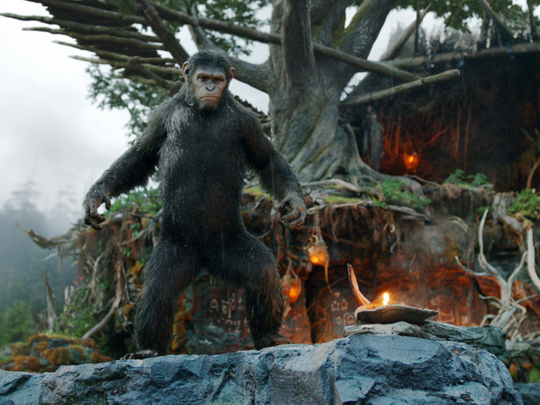
The nightmare scenario of mankind being overthrown by its own creation has been a source of tangible anxiety for at least 200 years, ever since Mary Shelley birthed the science fiction genre with her novel Frankenstein; or, the Modern Prometheus. It’s an anxiety the movies have always been keen to exploit, starting with the first adaptation of Shelly’s work, shot in 1910 by Thomas Edison, up to the present, in films like Her and Blade Runner 2049. But now, Hollywood itself may have to confront this dreadful spectre, in the form of the first ever robot movie star.
According to an exclusive from Deadline, director Tony Kaye and producer Sam Khoze are planning to cast a machine, equipped with AI capabilities and “trained in different acting methods and techniques”, as the lead in their upcoming film, 2nd Born.
Produced by Lotus Entertainment, 2nd Born is the sequel to 1st Born, which stars Val Kilmer, Tom Berenger and Denise Richards. That film, which centres around an American-Iranian couple whose pregnancy forces their extended families to overcome their cultural differences, is set for release later this year.
Beyond the initial mind-bending implications, the details surrounding the film are filled with the type of high weirdness you’d expect to find in a Thomas Pynchon novel. There is nothing in the premise of 1st Born to suggest a science fiction theme, which might lead one to assume that its sequel’s robot lead won’t even be playing a robot. Furthermore, Tony Kaye — the notoriously difficult director behind 90s skinhead drama American History X, and the graphic abortion documentary Lake of Fire — doesn’t appear to have any connection to the preceding film, making his involvement all the more baffling. The mystery of how this presumably small comedy in the vein of The Big Sick came to be the launching pad for what, if successful, would be a major step forward in the evolution of both cinema and robotics is almost more tantalising than its central gimmick.
Thanks to the utter randomness of its announcement, news of 2nd Born was met with immediate scepticism and ridicule across social media even though, when placed in a broader historical context, the idea of a movie starring a robot doesn’t seem all that radical.
The twining of performance and technology is one that predates the entire medium of movies, reaching back to motion-study techniques utilised in photogrammetry experiments in the late 1800s. These methods served as the basis for roto-scoping techniques used to make Disney’s Snow White, and it’s been a straight line from then to now.
Motion-capture is no longer looked on as just a special effects technique, but an art form in its own right. These days, it’s taken for granted that Andy Serkis should have won a couple Oscars — or at least been nominated — for his mo-cap enhanced performances throughout the Lord of the Rings and Planet of the Apes series.
Not everyone is an equal admirer of these performances and techniques. There are plenty who resent, if not motion capture in and of itself, the ever-increasing resources studios spend burying human actors in digital bodies and surrounding them with weightless fantasy worlds. Then there’s the moral queasiness many experience upon watching a deceased actor’s image and voice rendered into a new performance, as was done with (or to) the late Peter Cushing two years ago in Rogue One: A Star Wars Story.
Regardless of their individual merits and implications, all these examples have still required a human performance at their centre. The same can’t be said for other performances in popular films. Great as they were, it wasn’t the acting prowess of Roy Schneider, Richard Gere or Robert Shaw that puts butts into seats for Jaws. It was Jaws himself, an on-screen amalgamation of a couple different mechanical sharks, that audiences showed up to see. The same can be said of the mechanical wonders front-and-centre in ET and Jurassic Park.
Given his history with animatronics and computer-generated effects — as well as his interest in the subject of transhumanism in AI and Ready Player One — it’s almost shocking that Steven Spielberg hasn’t attempted something like 2nd Born. Or, if not Spielberg himself, one of his peers or collaborators — Peter Jackson, yet to journey back from the pixelated lands of Middle Earth, or Robert Zemeckis, still wandering around in the uncanny valley.
Or, for that matter, James Cameron — a man who’s never met an emerging technology he didn’t immediately try to master. Even if he is also the artist responsible for the single most harrowing vision we have of annihilation at the hands of automatons, you have to assume he’s at least a little jealous it’s Tony Kaye taking on this mad venture, and not him.
Then again, there probably isn’t anyone better suited to the task than Tony Kaye, including Cameron. Kaye did have American History X — by far his best-known film — taken away from him in the editing stages by its lead, human actor Edward Norton. The fallout from that debacle led to Kaye’s long exile from Hollywood, one from which he still hasn’t full returned.
Knowing that, it’s hard to not read a more sinister motivation behind this new experiment of his. Perhaps, this version of the story, Kaye isn’t Dr Frankenstein, but the monster. Perhaps his substituting a flesh-and-blood performer for a synthetic one isn’t even an experiment, so much as it is an act of revenge.













